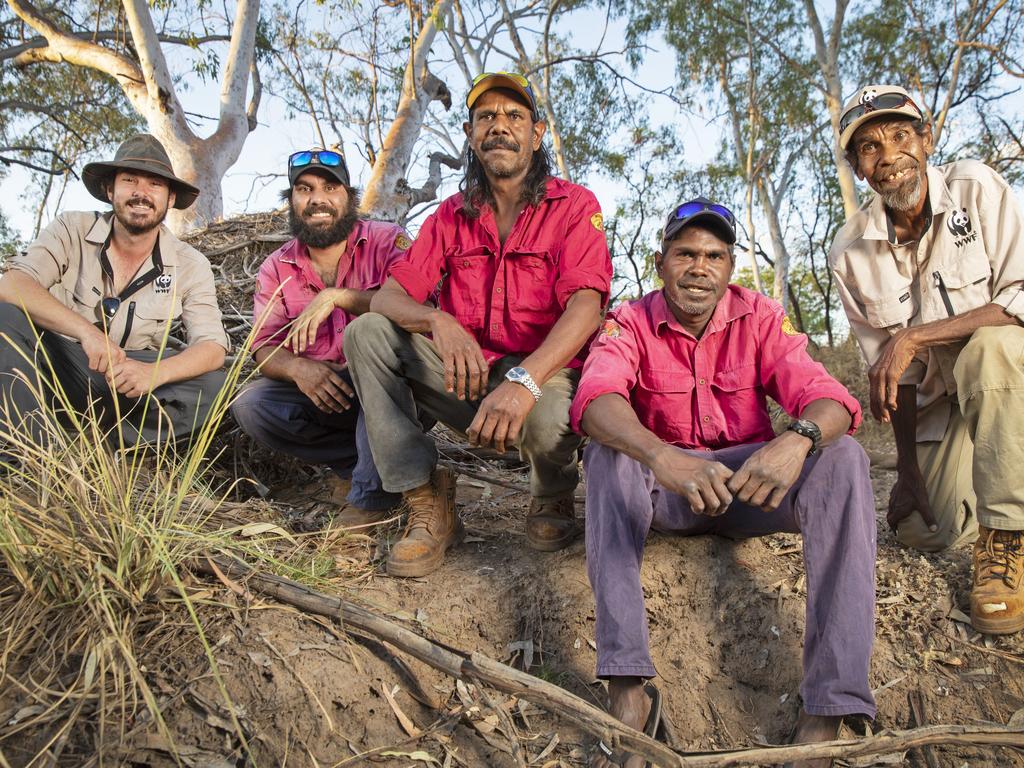War on feral cats a ‘phony war’ say Indigenous land owners, Coalition
Tanya Plibersek last year ‘declared war on feral cats’, but there has been little action and a much-lauded island eradication project knocked-back for funding.

Tanya Plibersek last year “declared war on feral cats”, but there are claims it is a phony war, with little action and a much-lauded island eradication project knocked back for funding.
Despite the federal Environment Minister’s declaration, the Coalition said a promised new national feral cat abatement plan was stalled and “not a single dollar” had been spent on practical eradication.
Meanwhile, a project hailed by experts to create a haven for native species by removing 80 feral cats from Indigenous-owned Bass Strait island, lungtalanana, has been denied funding.
“Six months ago, Tanya Plibersek declared war on feral cats but hasn’t deployed a single soldier into the field to deal with them,” said Coalition environment spokesman Jonno Duniam.
“The government need to put their money where their mouth is. From what we’ve seen, Labor hasn’t allocated a single dollar to help with efforts to control feral cats. It needs to work with farmers, conservationists, community groups and other stakeholders to properly fund programs to combat this problem.”

Senator Duniam said the feral cat problem on lungtalanana, or Clarke Island, northeast of the Tasmanian mainland, was “serious”, while attacking Ms Plibersek’s recent rejection of funding for cat eradication on the Indigenous-owned island.
When Ms Plibersek in September 2023 said “I want to see a feral cat-free Australia … we are declaring war on feral cats”, the Aboriginal owners of lungtalanana rejoiced.
The Tasmanian Aboriginal Centre believed its advanced plan to remove all 80 feral cats from the culturally significant 8230ha island - to reintroduce a host of key native species - was a strong contender for federal support.
However, several funding bids have been knocked back, with no funding stream appearing to “fit” the TAC’s $1m cat eradication plan. This is despite the broader rewilding project having WWF, community and scientific backing.

“There were a host of animals that we want to restore back to the island, including some that are threatened, including the long-nosed potoroo, and the New Holland mouse,” said TAC healthy country co-ordinator Andry Sculthorpe.
But to secure funding, it appeared projects needed to address the government’s nominated native species. “They say it’s a war on cats, but it’s only if it relates to their selected species,” Mr Sculthorpe said.
“If you don’t have quokkas, cats in the rest of the country can run wild – you won’t get funded. Feral cats are eating everything on lungtalanana.
“Our project is achievable on an offshore island where it can be maintained into the future. If the war on cats doesn’t extend to those sorts of places, it’s not really a war at all.”
Ms Plibersek referred questions to her department, which said the promised “threat abatement plan for predation by feral cats” was “being finalised in consultation with state and territory governments”, which had given in-principle agreement.
“The Australian government is providing significant support for on-ground feral cat control and applied research through projects under the Natural Heritage Trust, Saving Native Species Program and the National Environmental Science Program,” a spokeswoman said.

However, Rob Brewster, WWF-Australia’s rewilding manager, said the lungtalanana project was “a no-brainer” for federal support.
“The environmental benefits would far outweigh the costs,” Mr Brewster said.
“It would pave the way for an Indigenous-led project to return native species wiped out by feral predators.
“This will allow the Tasmanian Aboriginal community to restore healthy country to lungtalanana … which could then provide a model for the restoration of other islands under Indigenous management.”








To join the conversation, please log in. Don't have an account? Register
Join the conversation, you are commenting as Logout